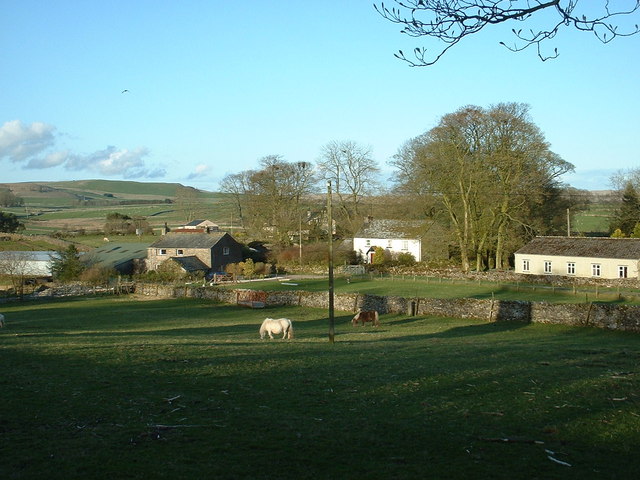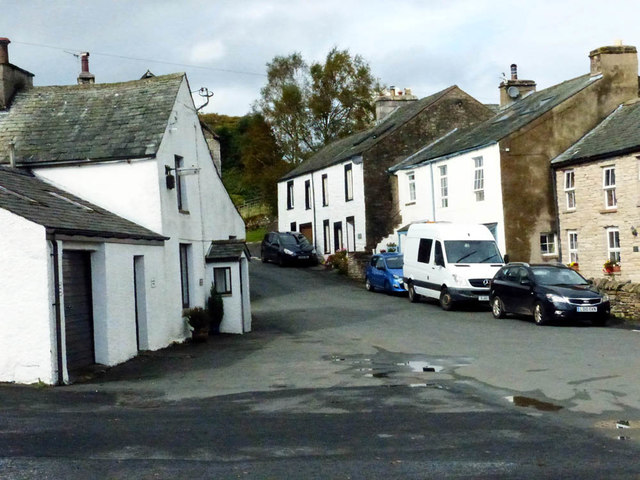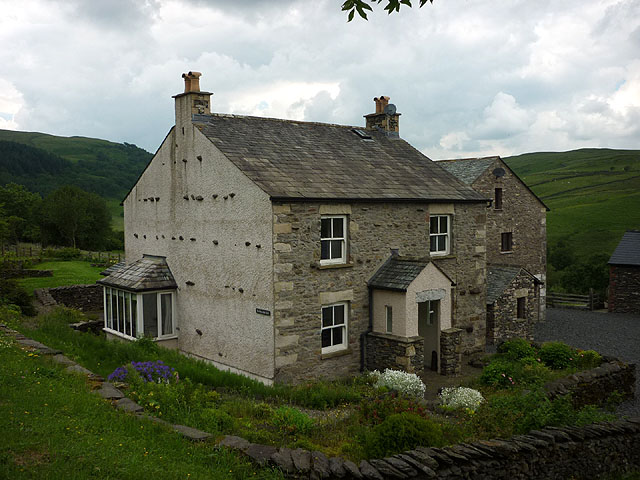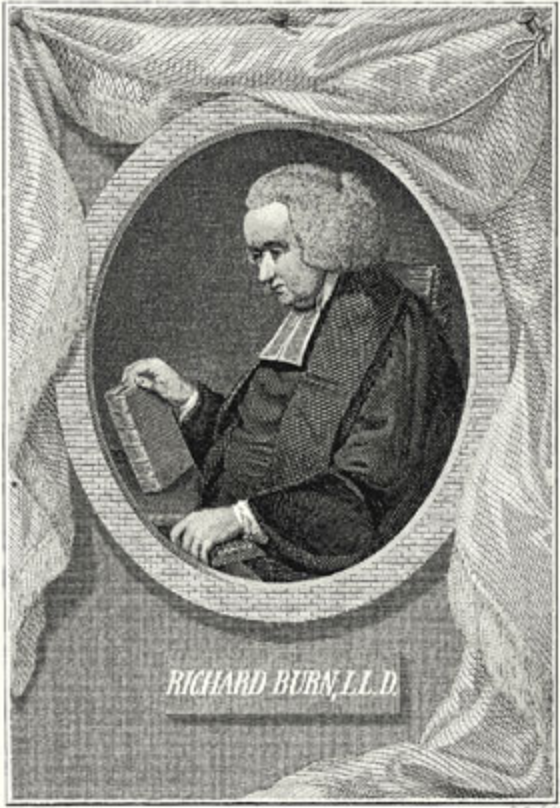Topics > Civil Parishes in Cumbria > Orton Civil Parish, Eden > Orton Parish, Westmorland, 1848
Orton Parish, Westmorland, 1848
ORTON (All Saints), a market-town and parish, in East ward and union, county of Westmorland, 9 miles (S.W. by S.) from Appleby, and 275 (N.W. by N.) from London; containing, with the townships of Bretherdale, Langdale, Raisbeck, Tebay, part of Birbeck-Fells, and part of Fawcet Forest, 1,449 inhabitants, of whom 558 are in the township of Orton. The town is pleasantly situated near the river Lune, and consists chiefly of one irregular street; it is supplied with water from two small rivulets, uniting at its extremity. There is a copper-mine in the neighbourhood; also abundance of limestone, and some quarries of white sandstone. The Appleby and Kendal road passes through, and at Tebay is a station of the Lancaster and Carlisle railway. A small market is held on Friday, the grant of which was confirmed by Cromwell, in 1653; and there are fairs on May 3rd, the Friday before Whit-Sunday, and the second Friday after Old Michaelmas, for horned cattle and sheep; and on the 20th August for sheep only. The parish contains about 25,000 acres, one-third of which is mountainous common land uninclosed, about 60 acres are woodland, and the rest meadow and pasture, with the exception of a few hundred acres in tillage.
The living is a vicarage, valued in the king's books at £16. 17. 3½.; net income, £235; patrons and impropriators, the Landowners. The tithes of the manor of Orton were commuted for land in 1769, and the tithes of the rest of the parish have been commuted for a rentcharge and seven acres of land under the commutation acts. There is a glebe of 214 acres, with a glebe-house. The church, standing upon rising ground on the north side of the town, is a neat edifice in the ancient English style, with a low embattled tower, and contains a monument in memory of Dr. Richard Burn, forty-nine years vicar, author of treatises on The Office of a Justice of the Peace and on Ecclesiastical Law, and, conjointly with Joseph Nicholson, of the History of Westmorland and Cumberland. There are places of worship for Baptists, Wesleyans, and other dissenters; also a free school having several benefactions. On the highest part of Orton Scar was formerly a beacon, communicating with those of Penrith, Stainmore, and Winfell in Kendal; and behind the Scar, to the east, is Castle-Folds, a place of safety for cattle in case of incursions from the Scottish borderers, before the union of the two kingdoms. Two large mounds near Tebay, called Castle How, commanding the pass by the river Lune, are Roman fortifications; and a little lower down the valley, near Borrowbridge, is a large square Roman camp, where several coins of the reign of Adrian were lately found. Near Raisgill Hall is a circular tumulus of loose stones, one hundred yards in circumference, on digging beneath which a human skeleton and several bones have been discovered. In a field called Gamelands is a number of large granite stones, the remains of a Druidical temple. Three-quarters of a mile from the church, is Our Lady's Well. Dr. Thomas Barlow, Bishop of Lincoln, and a writer of some eminence, was born in the parish in 1607.
Extract from: A Topographical Dictionary of England comprising the several counties, cities, boroughs, corporate and market towns, parishes, and townships..... 7th Edition, by Samuel Lewis, London, 1848.

Co-Curate Page
Raisbeck
- RAISBECK, a township, in the parish of Orton, East ward and union, county of Westmorland, 2 miles (E. by S.) from Orton; containing 214 inhabitants. The village is pleasantly situated …

Co-Curate Page
Orton, Eden
- Overview About Orton Map Street View Orton is a village and civil parish in Cumbria, England. It lies 15 miles (24 km) south of Penrith, Cumbria,1.5 miles (2.4 km) …

Co-Curate Page
Birbeck Fells Township, 1848
- BIRBECK-FELLS, a township, partly in the parish of Orton, East ward and union, and partly in the parish of Crosby-Ravensworth, West ward and union, county of Westmorland, 4 miles (W.S.W.) …

Co-Curate Page
Bretherdale
- Overview Map Street View Bretherdale is the valley of Bretherdale Beck in the Eden district of Cumbria, located near Tebay, about 8 miles north-east of Kendal and 16 miles south …

Co-Curate Page
Fawcett Forest Township, 1848
- FAWCET-FOREST, a township, partly in the parish of Orton, East ward, but chiefly in that of Kendal, union and ward of Kendal, county of Westmorland, 7 miles (N.N.E.) from Kendal; …

Co-Curate Page
Tebay Township, 1884
- TEBAY, a township, in the parish of Orton, East ward and union, county of Westmorland, 2½ miles (S.) from Orton; containing 368 inhabitants. The township comprises 6,832 acres, of which …

Co-Curate Page
Richard Burn (1709 - 1785)
- Overview About Richard Burn Richard Burn was a noted scholar and legal writer in the 18th century. He was born in Winton, near Kirkby Stephen in Westmorland and went on …


Co-Curate Page
Raisbeck
- RAISBECK, a township, in the parish of Orton, East ward and union, county of Westmorland, 2 miles (E. by S.) from Orton; containing 214 inhabitants. The village is pleasantly situated …

Co-Curate Page
Orton, Eden
- Overview About Orton Map Street View Orton is a village and civil parish in Cumbria, England. It lies 15 miles (24 km) south of Penrith, Cumbria,1.5 miles (2.4 km) …

Co-Curate Page
Birbeck Fells Township, 1848
- BIRBECK-FELLS, a township, partly in the parish of Orton, East ward and union, and partly in the parish of Crosby-Ravensworth, West ward and union, county of Westmorland, 4 miles (W.S.W.) …

Co-Curate Page
Bretherdale
- Overview Map Street View Bretherdale is the valley of Bretherdale Beck in the Eden district of Cumbria, located near Tebay, about 8 miles north-east of Kendal and 16 miles south …

Co-Curate Page
Fawcett Forest Township, 1848
- FAWCET-FOREST, a township, partly in the parish of Orton, East ward, but chiefly in that of Kendal, union and ward of Kendal, county of Westmorland, 7 miles (N.N.E.) from Kendal; …

Co-Curate Page
Tebay Township, 1884
- TEBAY, a township, in the parish of Orton, East ward and union, county of Westmorland, 2½ miles (S.) from Orton; containing 368 inhabitants. The township comprises 6,832 acres, of which …







